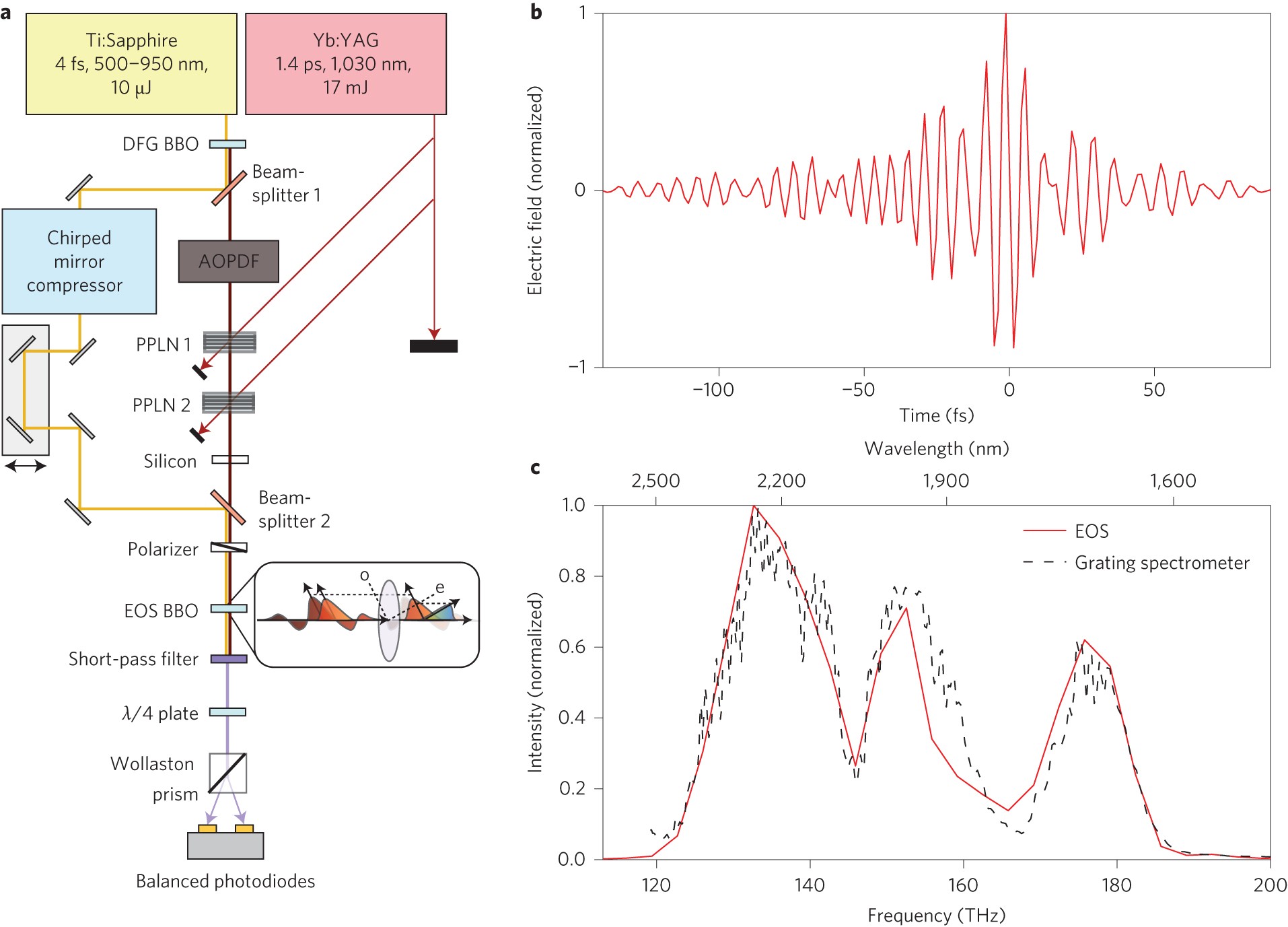Contents

Source: Nature
<>
Electro-optic Sampling: A Comprehensive Overview
Introduction
Electro-optic sampling is an optoelectronic technique that leverages the linear electro-optic effect to measure ultrafast optical phenomena. By utilizing ultrashort optical pulses and electro-optic probes, this method enables high sensitivity measurements without the need for extremely fast photodetectors.
Principles of Electro-optic Sampling
The technique involves measuring changes in polarization induced by an electric field, which are then converted into changes in optical power. By adjusting the arrival time of the probe pulse, a full waveform of a periodic signal can be obtained through sequential sampling. Balanced detection and lock-in detection techniques further enhance sensitivity and resolution.
Types of Electro-optic Probes
Internal electro-optic sampling utilizes the substrate of a photonic integrated circuit as the electro-optic medium, while external sampling employs an external electro-optic probe. Materials such as gallium arsenide and lithium tantalate are commonly used for probes, each offering unique advantages in terms of performance and invasiveness.
Electro-optic Sampling Systems
Two main types of systems are pump-probe setups and single pulse train systems, each offering distinct advantages in terms of measurement flexibility and accuracy. These systems enable the measurement of high-speed electronic and optoelectronic components with bandwidths exceeding 1 THz.
Factors Affecting Measurement Bandwidth
Several factors influence the achievable measurement bandwidth, including the speed of the electro-optic material, the interaction geometry in the probe, and the design of electrodes used for signal transmission. Optimizing these factors is crucial for maximizing the measurement capabilities of the system.
Applications of Electro-optic Sampling
Electro-optic sampling finds applications in characterizing high-speed electronic components, measuring terahertz waveforms, and conducting spectroscopic analysis. Its ability to provide contactless characterization and high measurement bandwidth makes it invaluable in various research and industrial settings.
Conclusion
Electro-optic sampling is a powerful technique for investigating ultrafast optical phenomena with high sensitivity and resolution. By understanding the principles and applications of this method, researchers and engineers can unlock new possibilities in the field of optoelectronics.

Source: MDPI
Feel free to comment your thoughts.



